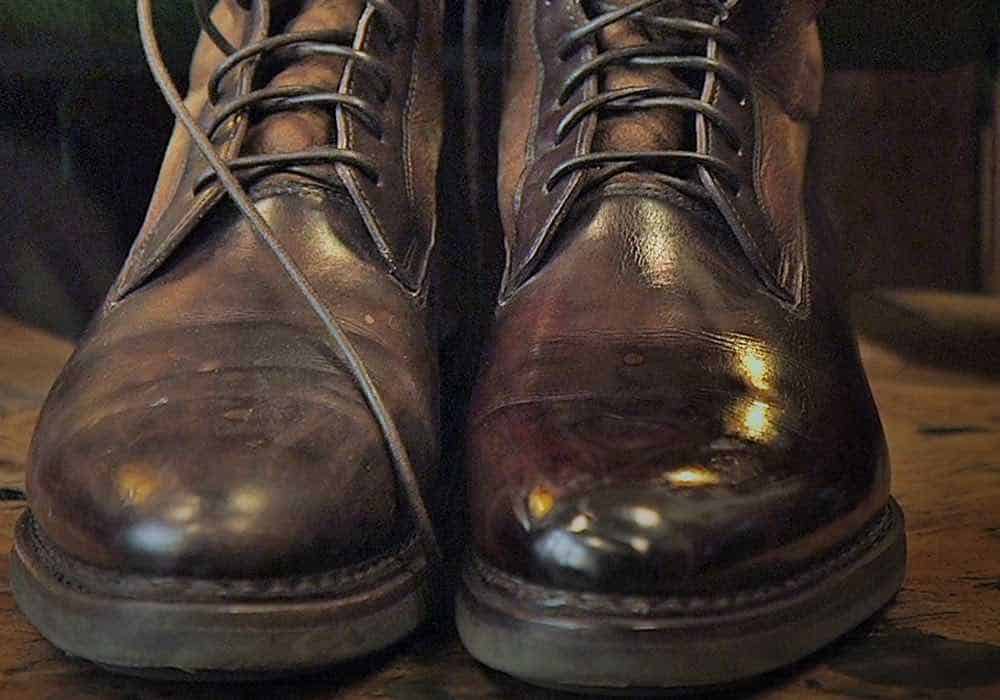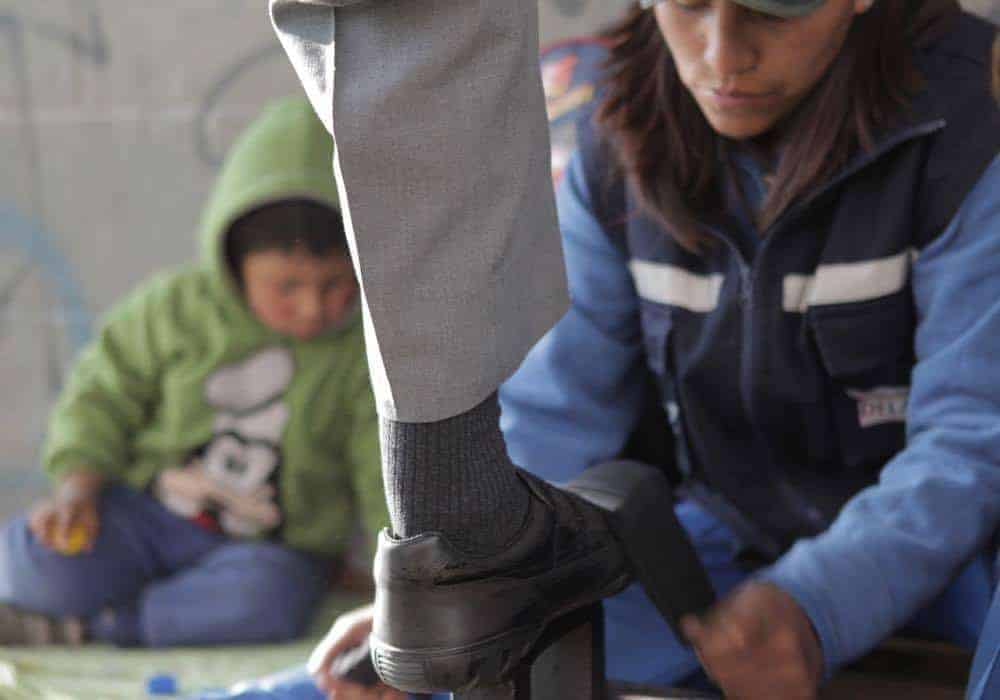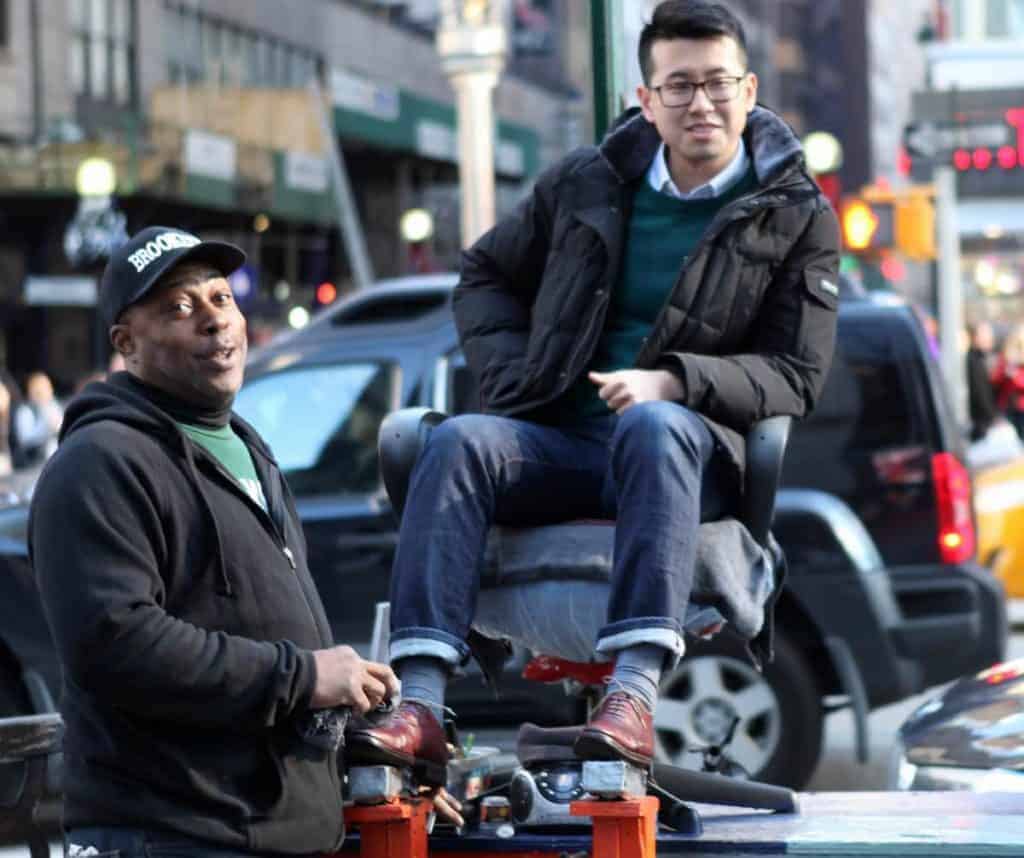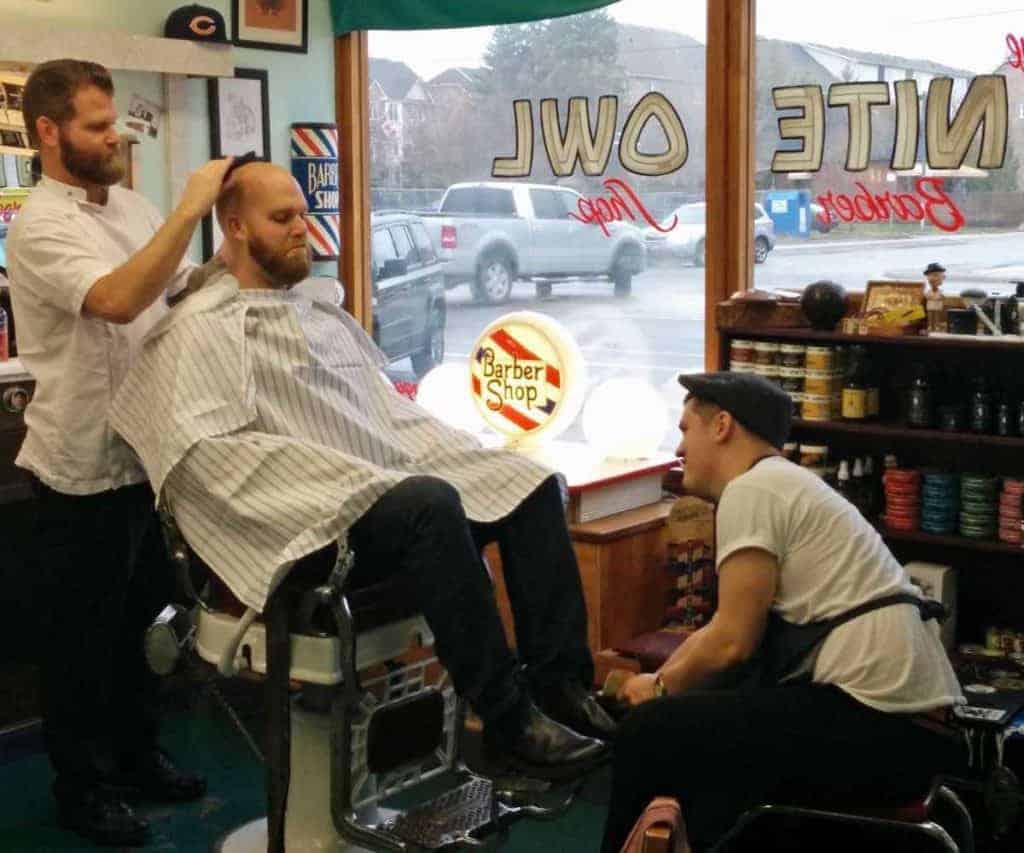Canadian filmmaker Stacey Tenenbaum on how shoe shiners tell a story about class difference around the world in her HotDocs film Shiners. For HotDocs tickets and more information on the film, click here.

The films at Hot Docs this year are particularly political, from climate change documentary Bill Nye: Science Guy, to Gulf war memoir My Enemy, My Brother. But if you are looking for lighter fare, then you should take a closer look at Stacey Tenenbaum’s documentary Shiners. Tenenbaum sets out to find shoe shiners from across the world to examine one of the oldest tactile professions. Set in Bolivia, Sarajevo, New York, Toronto, and Tokyo, Tenenbaum explores the similarities and differences in this profession across eight different countries. Each shiner has their own moment in the spotlight so they can express their individual passion for working in this traditional cobbler’s profession.
Shiners screens as part of the 2017 Hot Docs Festival. I had the pleasure of talking, and often laughing, with Tenenbaum about this up close and personal documentary about the very giving nature of the shoe shining industry.
7R: What made this profession so cinematic to you?
Stacey Tenenbaum (ST): Leather is a noble material. Doing something with your hands, it’s just very tactile. My goal was to elevate the profession. And to bring honour to it. To make it something that would be impressive. Doing a feature film in a very cinematic way is my homage to shoe shiners everywhere.
[clickToTweet tweet=”‘Leather is a noble material. Doing something with your hands, it’s just very tactile.'” quote=”Leather is a noble material. Doing something with your hands, it’s just very tactile.”]
7R: What were some of the similarities or differences in the profession depending on the country?
ST: They really take pride in their work and love their jobs everywhere, even in Bolivia where they’re not making a lot of money, and they’re really discriminated against. The shoe shiner there said, “I just love really making shoes shiny.” I think that is common across the board.
Also, they like to be entrepreneurs. They basically consider themselves to be their own bosses. I think people don’t think about shoe shiners as being entrepreneurs. They all have different ways of shining, their own techniques. There’s definitely a prejudice between high-end shoe shining and lower-end shoe shining. There’s a whole culture around that.
[clickToTweet tweet=””The shoe shiner there said, ‘I just love really making shoes shiny.’ ” – Tenenbaum” quote=”The shoe shiner there said, ‘I just love really making shoes shiny.'”]
7R: The ritual of shoe shining was filmed over and over again with close-up shots of the shining. How did you decide to film it, and why did you continuously repeat this sequence?
ST: I call it “shoe porn”. I think the people who really love this film are people who are really into shoes and shoe shining. Men are crazy about their shoes. Men are spending more money than women are nowadays. There’s this crazy culture of luxury shoes, of getting shoes custom made, custom dyed. It’s manual labour, something with your hands. I really wanted to show those close-ups of the hands and the shoes and for people to see what a tactile milieu I was working in.

7R: How did you collaborate with your Director of Photography, Van Rokyo, to make your vision come to life? What sort of conversations did you have with him?
ST: I had worked with him in the past. He’s extremely talented. He’s one of those cameramen you don’t really have to worry about giving them too much direction. Every time I would want him to do something, he was already doing it. Dream camera man!
I talked to him about playing with perspective: the shoe shiner perspective, the client perspective, and putting people in those two positions. Often, he would be doing point of view shots. He might be down on the ground, in Bolivia, seeing what the shoe shiner sees. I really wanted the film to be seen through their eyes.
[clickToTweet tweet=”‘Whenever clients were ignoring the shoe shiner, we would really try to get their body language on tape.'” quote=”Whenever clients were ignoring the shoe shiner, we would really try to get their body language on tape.”]
I did talk to the [DOP] in advance about relationship between the client and the shiner. Whenever we would see that the clients were ignoring the shoe shiner, we would really try to get their body language on tape as much as we can. It’s not something I wanted to beat people over the head with. Seeing the different body language a customer has, and how you interact with the shoe shiner, it does sort of send a message in the film. It’s really about your choice, how you treat the shoe shiner.

7R: How is shoe shining a good way to examine the class systems in different countries?
ST: When I first starting researching the film, I was coming at it from the perspective of, “This is a great job!” The more people I talked to, the more, you know, I would never get my shoe shined. It makes me feel so uncomfortable to have someone at my feet. This real kind of visceral reaction, especially when you travel down to some of the southern states where race is also wrapped up with this whole issue.
I realized there is a lot of meat there, a lot of stuff to discuss, in relation to class. Visually, the shoe shiner is below the client, so the class difference is so visually shown. I think that’s what makes people so uncomfortable about it. It was something that I thought would be a really good way to go into issues of class and examine that in different countries. Shoe shiners are treated differently in different countries.
[clickToTweet tweet=”‘I would never get my shoe shined. It makes me feel so uncomfortable to have someone at my feet.'” quote=”I would never get my shoe shined. It makes me feel so uncomfortable to have someone at my feet.”]
7R: What was the most extreme example of this for you?
ST: Definitely Bolivia. That’s why I chose Bolivia to begin with. There’s lots and lots of countries with poor shoe shiners in them. In the third world, it’s a fairly typical thing. But in Bolivia, it was so extreme because of the shame they had associated with the job and the fact that they covered their faces. They didn’t want their families to know that they were doing this job. Everybody looks down on the shoe shiners there. You can tell when they do shoe shines because they are the lowest [on the ground]. The client is standing up. They rarely have any discussions or interactions.
[clickToTweet tweet=”‘The shoe shiner is below the client, so the class difference is so visually shown.’ – Tenenbaum” quote=”The shoe shiner is below the client, so the class difference is so visually shown.”]
Bolivia was really fascinating because it was a place where most people wanted to get their shoe shined, which I found ironic. They have 25,000 shoe shiners in La Paz, and probably more, because they are not really accounted for. The poorest of the poor get their shoes shined there, compared to other countries where maybe only the rich are getting their shoes shined.
7R: Why did you leave out details about how much shiners make in a day?
ST: There’s a lot of politics involved in it. I wanted to keep the stories fairly personal, about the people, so I didn’t want to get into big issues in the film. Some of the characters were willing to talk about it; some characters [were] a bit cagey about how much they made.
The guy in Tokyo was making 27 dollars a shine, but he’s also in probably one of the highest priced areas of Tokyo. He’s taking one hour to do a shoe shine. He said that when he was working on the streets at five bucks a shine, he was making more money than he currently is in his shop at 25 dollars an hour.
At [New York City’s] Shine & Co. they’re charging a similar rate. I wanted to include this in the film, I just didn’t have time. They’re really political about why they’re charging so much more for their shine. Their goal is to elevate shoe shining. They think that if you keep giving it away for five bucks a shine, you’re going to be treated like a five dollar a shine shiner. The people at the Shine & Co are really passionate about “Okay, let’s charge more. Let’s get better products. Let’s give a better service. Then it will be worth 15, 20, 25 dollars.” They’re sort of crusaders in that area.

7R: Now that you’ve been around the world, how would you define a good shoe shiner?
ST: I would think that any shoe shiner that you can have a nice connection with. That can be in any country. It’s easier if there is no language barrier. Someone who cares about their work, you could tell they care that they’re not just going through the motions. I think that if you talk to your shiner, and you’re nice to your shiner, you get a better shine. I’m absolutely convinced of that. The shiners want to have that connection, too, otherwise they’re job’s boring, right? So the best shoe shiner is the one you can have fun with and connect with.
[clickToTweet tweet=”‘If you talk to your shiner, and you’re nice to your shiner, you get a better shine.'” quote=”If you talk to your shiner, and you’re nice to your shiner, you get a better shine.”]
7R: For an audience that is not involved in shoe shining, what do you want them to take away from this film?
ST: [When I told] my Aunt in London that I’m doing this film about shoe shiners, she was like, “Oh that’s like Charles Dickens stuff! They’re uneducated. They’re poor. They can’t do anything else. They should be pitied.” And I’m like, “No, they love their jobs. They’re amazing. This is what they’ve chosen to do in life.”
[clickToTweet tweet=”‘They love their jobs. They’re amazing. This is what they’ve chosen to do in life.’ – Tenenbaum” quote=”They love their jobs. They’re amazing. This is what they’ve chosen to do in life.”]
I wanted to show they’re real people. They’re intelligent. They have hopes and dreams. Maybe they’re following a different path than what society thinks is right, but they’re following their own path, and they’re happy with it. At the end of the day, being happy with what you choose to do in life is pretty important. I want people to fall in love with getting their shoes shined. Vincent said that was one of the biggest things he loved about the job: you were able to give something to someone. You were able to make them feel good. It’s such a deep profession.
Read more: Interview: School is a utopia in Irish HotDocs film School Life >>
Read the rest of our 2017 HotDocs coverage here.

